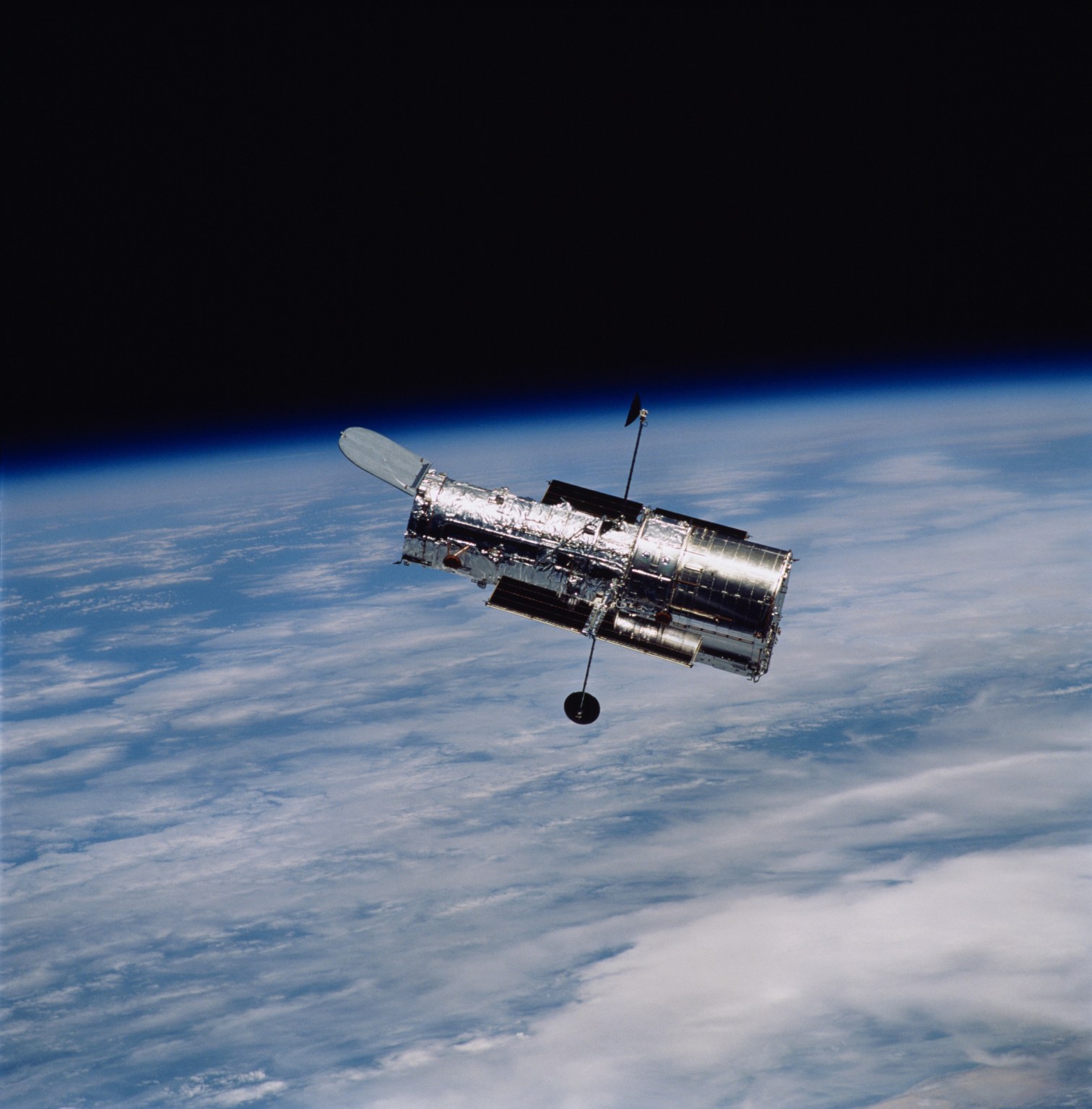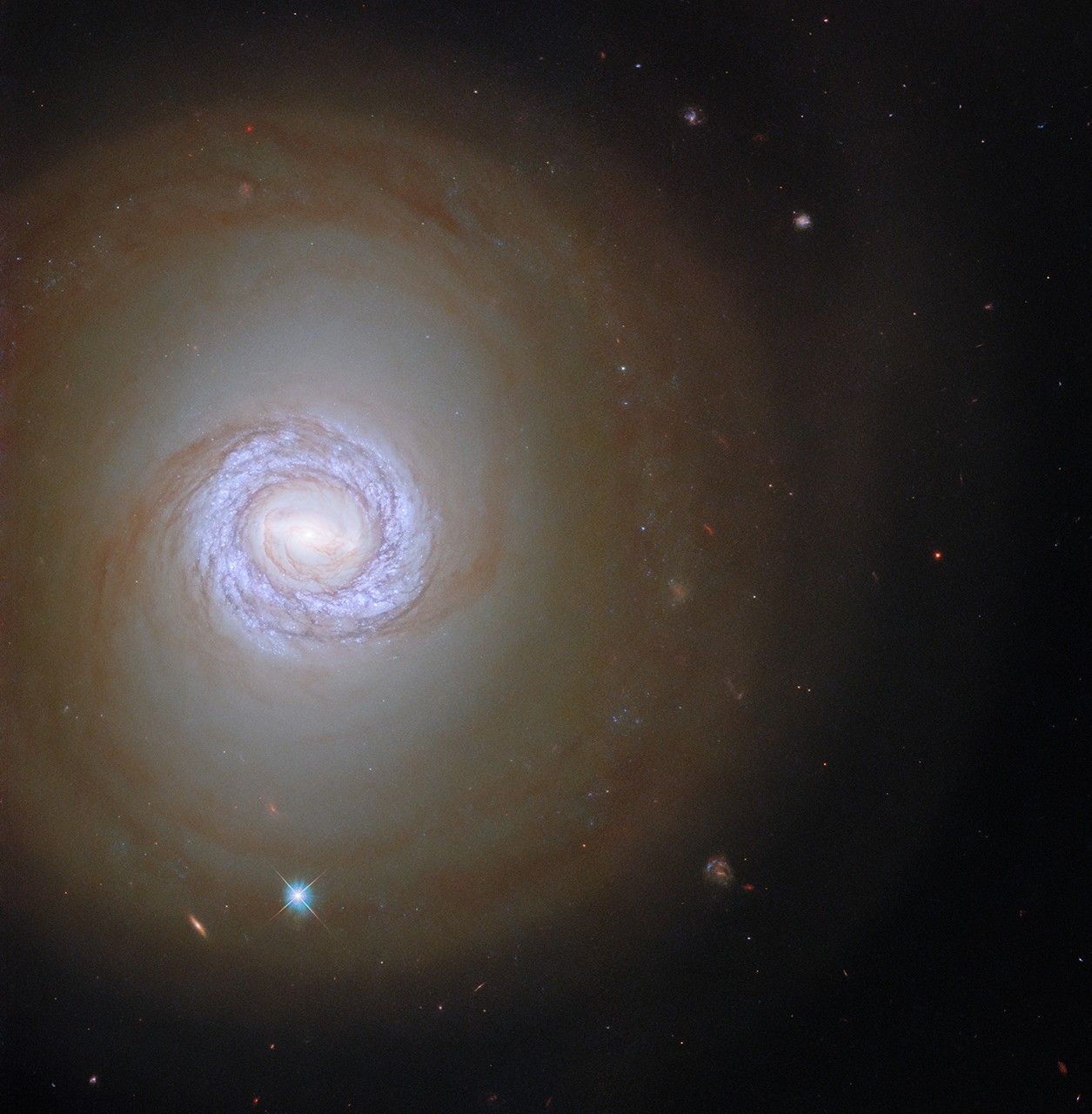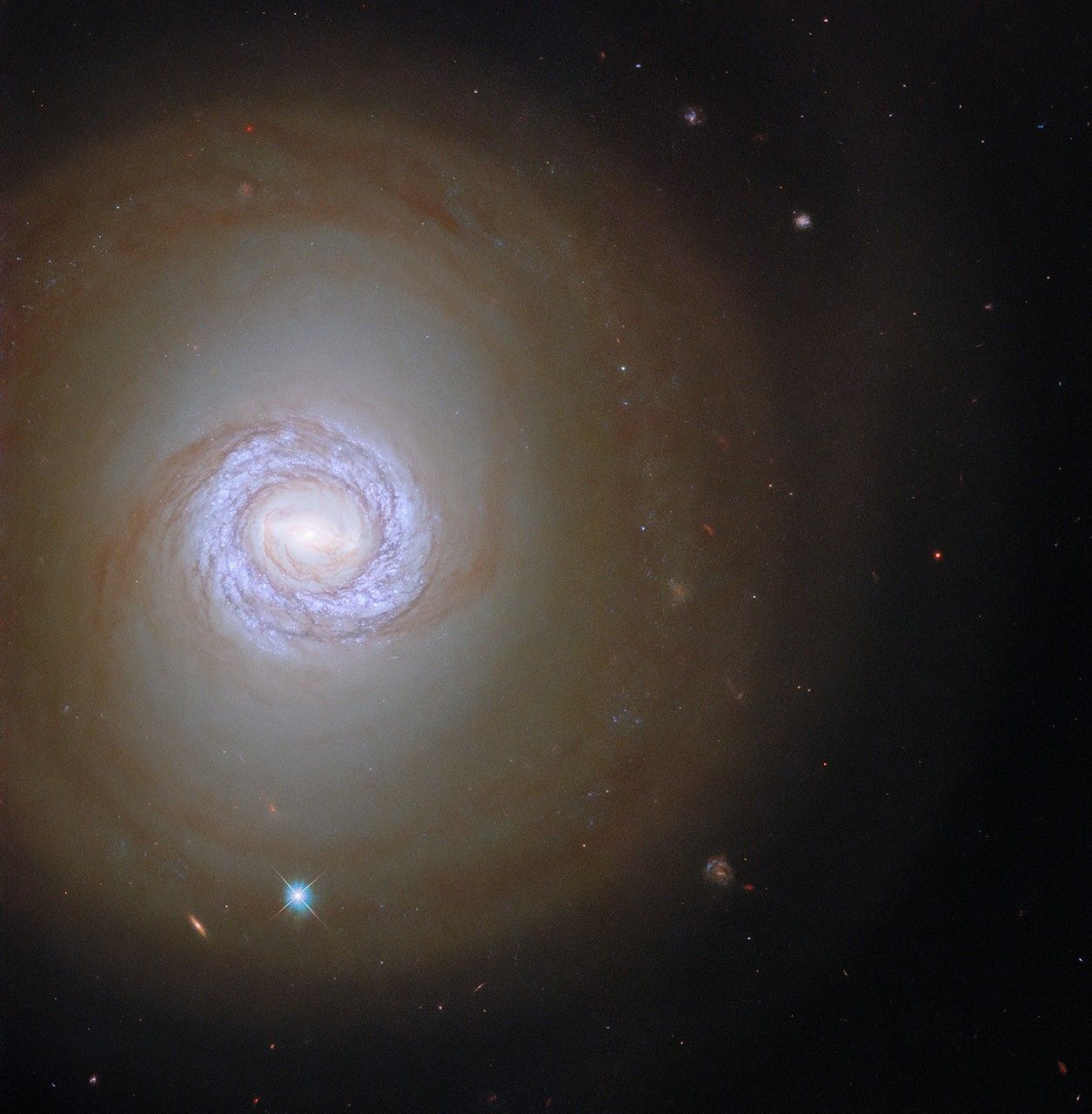Explore Hubble Hubble Home Overview About Hubble The History of Hubble Hubble Timeline Why Have a Telescope in Space? Hubble by the Numbers At the Museum FAQs Impact & Benefits Hubble’s Impact & Benefits Science Impacts Cultural Impact Technology Benefits Impact on Human Spaceflight Astro Community Impacts Science Hubble Science Science Themes Science Highlights Science Behind Discoveries Hubble’s Partners in Science Universe Uncovered Explore the Night Sky Observatory Hubble Observatory Hubble Design Mission Operations Missions to Hubble Hubble vs Webb Team Hubble Team Career Aspirations Hubble Astronauts Multimedia Multimedia Images Videos Sonifications Podcasts e-Books Online Activities 3D Hubble Models Lithographs Fact Sheets Posters Hubble on the NASA App Glossary News Hubble News Social Media Media Resources More 35th Anniversary Online Activities 2 min read
Hubble Pinpoints Young Stars in Spiral Galaxy  This NASA/ESA Hubble Space Telescope image features the spiral galaxy NGC 1317. ESA/Hubble & NASA, J. Lee and the PHANGS-HST Team In this image, the NASA/ESA Hubble Space Telescope peers into the spiral galaxy NGC 1317 in the constellation Fornax, located more than 50 million light-years from Earth. Visible in this galaxy image is a bright blue ring that hosts hot, young stars. NGC 1317 is one of a pair, but its rowdy larger neighbor, NGC 1316, lies outside Hubble’s field of view. Despite the absence of its neighboring galaxy, this image finds NGC 1317 accompanied by two objects from very different parts of the universe. The bright point ringed with a crisscross pattern is a star from our own galaxy surrounded by diffraction spikes, whereas the redder elongated smudge is a distant galaxy lying far beyond NGC 1317.
This NASA/ESA Hubble Space Telescope image features the spiral galaxy NGC 1317. ESA/Hubble & NASA, J. Lee and the PHANGS-HST Team In this image, the NASA/ESA Hubble Space Telescope peers into the spiral galaxy NGC 1317 in the constellation Fornax, located more than 50 million light-years from Earth. Visible in this galaxy image is a bright blue ring that hosts hot, young stars. NGC 1317 is one of a pair, but its rowdy larger neighbor, NGC 1316, lies outside Hubble’s field of view. Despite the absence of its neighboring galaxy, this image finds NGC 1317 accompanied by two objects from very different parts of the universe. The bright point ringed with a crisscross pattern is a star from our own galaxy surrounded by diffraction spikes, whereas the redder elongated smudge is a distant galaxy lying far beyond NGC 1317.
The data presented in this image are from a vast observing campaign of hundreds of observations from Hubble’s Wide Field Camera 3 and Advanced Camera for Surveys. Combined with data from the ALMA array in the Atacama Desert, these observations help astronomers chart the connections between vast clouds of cold gas and the fiercely hot, young stars that form within them. ALMA’s unparalleled sensitivity at long wavelengths identified vast reservoirs of cold gas throughout the local universe, and Hubble’s sharp vision pinpointed clusters of young stars, as well as measuring their ages and masses.
Often the most exciting astronomical discoveries require this kind of telescope teamwork, with cutting-edge facilities working together to provide astronomers with information across the electromagnetic spectrum. The same applies to Hubble’s observations that laid the groundwork for the NASA/ESA/CSA James Webb Space Telescope’s scientific observations.
Facebook logo @NASAHubble @NASAHubble Instagram logo @NASAHubble Media Contact:
Claire Andreoli (claire.andreoli@nasa.gov)
NASA’s Goddard Space Flight Center, Greenbelt, MD
Details Last Updated May 14, 2025 Editor Andrea Gianopoulos Location NASA Goddard Space Flight Center Related Terms Hubble Space Telescope Astrophysics Astrophysics Division Galaxies Goddard Space Flight Center Spiral Galaxies The Universe
Keep Exploring Discover More Topics From Hubble Hubble Space Telescope
Since its 1990 launch, the Hubble Space Telescope has changed our fundamental understanding of the universe.



Science Behind the Discoveries



